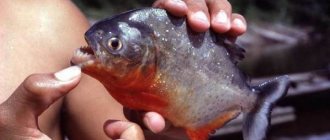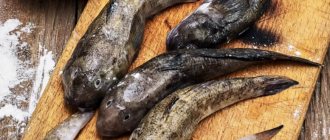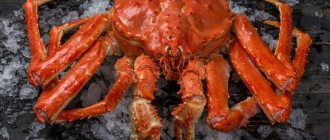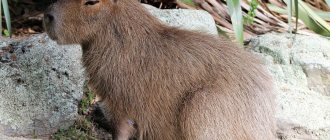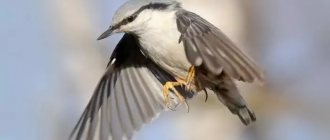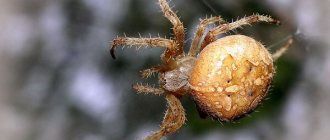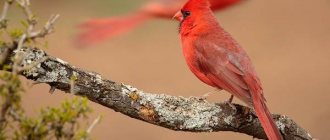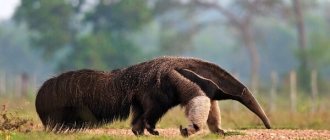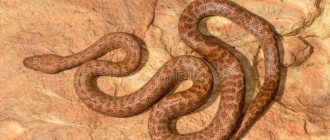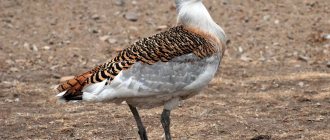Common name: Pygocentrus nattereri.
Kingdom: Animals.
Type: Chordata.
Class: Ray-finned fish.
Order: Characiniformes.
Family: Piranha (contains 16 modern genera with 97 species).
International scientific name: Serrasalmidae Bleeker, 1859.
Maximum size: From 10 to 14 cm, some types up to 30 cm.
Lifespan: 4-25 years.
Habitat: Amazon and Paraguay rivers.
Water parameters for keeping piranhas: pH from 7.0 to 7.5.
Temperature: 24.5 to 28.4 C.
Minimum aquarium volume: From 120 liters.
Food: Omnivores.
Despite their reputation as a dangerous tropical fish, piranhas are quite popular aquarium fish.
Next, we recommend that you watch an excellent visualization of these fish, which are actually not so aggressive.
Piranha habitat
Piranha habitat
Piranha habitat
Piranha habitat
Piranhas are a family of freshwater fish from the order Characinidae, living in the waters of South America (Argentina, Bolivia, Brazil, Venezuela, Colombia, Paraguay, Peru, Uruguay, Ecuador, etc.), in the rivers of the Amazon, Parana, Uruguay, Essequibo, and Orinoco basins. Piranhas feel equally good both in rivers and in channels and floodplain lakes.
A story of horror
There is one story that explains very well why we have this opinion. In 1913, Theodore Roosevelt went on a scientific expedition to Brazil. There he visited one of the local tribes. In order to impress the dear guest, the natives showed him a terrible picture. A dead cow was thrown into a piranha pond. The water boiled in the pond, and among the splashes one could see small fish tearing at the carcass of a cow. Gradually the cow was devoured almost completely. Roosevelt was so impressed that he wrote in his diary that these were extremely dangerous and bloodthirsty creatures.
Appearance of piranhas - description
Piranha appearance
The piranha family is one of the extremely aggressive freshwater fish. They have two rows of sharp, triangular teeth that are tightly packed on both sides of the jaw. The anal and dorsal fins are long, the pelvic fins are short. The eyes are large, the pupils are dark. The jaws have very sharp teeth, set like teeth on a saw, which close together without gaps when bitten.
Piranha photo
Female piranhas are larger and thicker than males. Males have brighter colors.
Piranhas are typically colored in shades of red, blue, green, brown, silver or black.
The lifespan of Piranhas is from four to twenty-five years, depending on the species and conditions of detention (larger ones live longer).
I took a bite myself - don’t bother anyone else
Red-bellied piranhas (considered the most dangerous) have a fairly high level of organization compared to many other fish. During the hunt, the school disperses to the sides and if someone finds food, he gives a sign to the others. After this, the flock gathers and begins to eat. After taking a bite, the fish swims to the side so that others can get closer to the food.
By the way, piranhas’ teeth do not wear down like those of dogs or cats. During an attack, they break off or simply fall out. But this does not make the fish less toothy - over the course of their entire life (about 20-25 years), piranhas lose and grow a couple of hundred sharp incisors. The teeth themselves are razor sharp, and when the mouth is closed they work like scissors, “cutting off” portioned pieces of meat or leaves.
Redfin mili (Myloplus rubripinnis), Müller & Troschel, 1844.
Redfin mili photo
This species of piranha has a silver-gray color and a reddish anal fin. There are fish with a reddish belly and red-gold spots on the body. The anal fin of the male has a long outer braid and a notch.
Synonyms: stellate mileus.
Body length: from 10 to 25 cm, in aquariums rarely exceeds 15 cm.
Water parameters: t from 22 to 27 0C, dKH < 1°, dGH up to 5°, pH from 6.5 to 7.0.
Food: omnivore.
Habitat: rivers of Guyana, Suriname and Amazon.
Red pacu (Piaractus brachypomus), Cuvier, 1818.
Red pacu photo
The main body color of the red pacu is silver. The underbelly and fins are colored red. A dark stripe runs along the edge of the caudal fin.
In nature, the main diet consists of nuts. To keep a red pacu, you need an aquarium with a volume of at least 200 liters.
Synonyms: red-breasted pacu, two-toothed colossoma, Colossoma bidens.
Body length: up to 80 cm, in aquariums does not exceed 50 cm.
Water parameters: t from 26 to 30 0C, dKH < 2°, dGH up to 14°, pH from 6.0 to 7.2.
Food: omnivore, but eats almost no meat.
Life expectancy: up to 28 years.
Habitat: Amazon river basin.
Jaw structure
Piranhas are characterized by an amazing structure of the jaw apparatus, which perhaps has no analogues in nature. Everything is provided in it down to the finest detail. The teeth, triangular in shape and measuring 4-5 mm, are lamellar and sharp, like a razor blade, slightly curved inward. This allows them to easily cut through the flesh of the victim, tearing off pieces of meat. In addition, the upper and lower teeth fit perfectly into the sinuses when the jaw is closed, creating a strong pressure. This feature allows piranhas to bite through bones. When closed, the jaws close like a trap. According to the latest research by scientists, the bite force is 320 newtons and has no analogues in the animal world. When a piranha's jaws bite, it exerts about 30 times its weight in pressure.
Brown pacu (Colossoma macropomum), Cuvier, 1816.
Brown pacu photo
A type of piranha with a brown, gray or black body color. The appearance of fish of this species resembles piranhas, the body is high, laterally compressed, and the eyes are large. About 10% of body weight is fat. The fish has square teeth, making them incredibly similar to human teeth. Instead of piercing the prey with its fangs and tearing it apart, the pacu bites right through the body of the prey, tearing off pieces of the body. The fish can easily crack nuts with its jaws.
Brown pacu, as a rule, are solitary; juveniles consume zooplankton, insects, and snails; adult fish are mainly herbivorous. Young individuals stay in the black waters of the river until puberty. Brown pacu is common in aquaculture, has good immunity and tolerates low water salinity.
Synonyms: Tambaki.
Body length: up to 70 cm, there are individuals over 100 cm.
Weight: up to 40 kg.
Water parameters: t from 26 to 30 0C, dKH < 2°, dGH up to 14°, pH from 6.0 to 7.2.
Food: omnivore.
Life expectancy: from 20 to 25 years.
Habitat: Amazon and Orinoco river basins.
Features of character and lifestyle
Photo: Piranha underwater
Piranhas usually gather in schools of about 30 individuals. Although in some species the school can number about a thousand fish. Predators go hunting at dusk, at night and in the pre-dawn hours. Many legends and scary stories are associated with piranhas and their bloodthirstiness. It is a mistake to believe that the movement of entire flocks is associated with their desire to kill; they exist collectively, on the contrary, to protect themselves from other ill-wishers.
The aggressive and conflictual nature of piranhas can be seen in the way they behave among their own, often starting internecine wars, fights and causing injury to each other. Piranhas spend most of their lives searching for food, because they have a colossal appetite.
Hunting piranhas is not a pleasant sight; they occupy the body of the prey in a large flock, tearing off pieces of flesh with their sharp teeth; these fish can gnaw a large animal to the bone in just one minute. Pisces are very sensitive to any splashes of water, and the smell of blood attracts them like a powerful magnet.
Interesting fact: There has never been a single recorded case of a piranha eating a person whole, as shown in horror films.
A piranha can bite a person, causing incredible pain; such cases are not uncommon and occur every year. The bite site of this fish becomes very inflamed and takes a long time to heal, and sometimes people have to have their limbs amputated because of it. The jaws of piranhas have such enormous power that they have no equal among any other animals.
In general, the temperament of these fish is very aggressive, their character is not the best, and piranhas do not have the endurance. In Brazil, they even tried to poison them with poison, but they only destroyed other living creatures in the pond, while the piranhas remained unharmed. Of course, these are aggressive predators, but many legends and stories exaggerate the level of danger posed by these fish.
Flag Piranha (Catoprion Mento), Cuvier, 1819.
It has an oblong, laterally compressed body of a silvery color, with a green tint in the back area. The Flag Piranha has a small red spot near its gill covers. The fins are transparent. The first rays of the dorsal and anal fin are elongated. There is a small black spot at the base of the tail. Among the features one can highlight a rather massive lower jaw, which is characteristic of almost all types of Piranha.
The Flag Piranha is a predatory fish, so you should not keep it in a community aquarium, as smaller fish will be eaten, and larger species will most likely lose their scales and fins.
Synonyms: Pennant Piranha, Wimpel Piranha, Serrasalmus mento, Mylesinus macropterus.
Body length: up to 15 cm.
Water parameters: t from 22 to 25 0C, dKH < 1°, dGH up to 15°, pH from 5.5 to 7.5.
Food: omnivore.
Life expectancy: from 10 to 12 years.
Habitat: the Amazon, Orinoco, Essequibo river basins and the upper reaches of Paraguay.
Metynnis luna, Cope, 1878.
Lunar Metinnis photo
Representatives of this species are very tall-bodied, silvery with a reddish spot behind the gill cover. The anal fin is veiled in males, reddish in females. They mature at 1.5 years. Metinnis are herbivorous fish that can damage or completely destroy plants. They enjoy eating cabbage and lettuce leaves.
Body length: up to 25 cm.
Water parameters: t from 26 to 28 0C, dKH < 1°, dGH up to 15°, pH from 5.0 to 6.8.
Food: omnivore.
Habitat: Amazon river basin.
Slender piranha (Serrasalmus elongates), Kner, 1858.
Slender piranha photo
The body of the Slender Piranha is silver-gray with small pockmarks and a wide black border at the root of the tail. Very aggressive looking. Having reached sizes from 1.5 to 2 cm, young fish can begin to attack each other, causing injury.
The fish got its name because of its elongated body shape. In community aquariums, it can bite the fins of slow-moving fish, so they are kept with active large fish, and preferably a school in a species aquarium.
Synonyms: Serrasalmus elongatus.
Body length: maximum up to 30 cm.
Water parameters: t from 26 to 28 0C, dKH < 2°, dGH up to 14°, pH from 6.2 to 7.2.
Food: omnivore.
Habitat: Amazon and Orinoco river basins.
Compatibility
In an aquarium school of Piranhas there should be at least four individuals, all of the same age. The younger and weaker ones will be persecuted and persecuted and may be eaten.
Neighborhood with other fish is undesirable; it is better to set up a species aquarium. Piranhas perceive any inhabitants as food, they are especially aggressive during the spawning period.
But if you feed these fish well and do not allow them to starve, then you can take a chance and add black pacu, singing catfish, plexostomus and pterogoplicht to them. The last two species also have a strong shell and live on the bottom.
But there can be no definite advice about combining Piranhas with someone. For some, they live quite calmly with their neighbors, for others, fights break out even within the pack. Most likely, this is influenced by many factors - the size of the tank, water parameters, equipment of the tank with shelters.
Natterer's piranha (Pygocentrus nattereri), Kner, 1858.
Piranha Natterera photo
Also known as "saikanga". This variety of Piranha received its name in honor of the Austrian scientist Johann Natterer. Juveniles of this species have a very bright bluish body color. The chest and paired fins are red, the caudal fin is black with a wide blue vertical stripe. The back is dark in color. After 8 months, the fish changes color and becomes gray-silver, the sides turn pink, the spots fade or disappear altogether, but small golden sparkles appear. The anal fin becomes lighter, and with the onset of spawning it becomes completely red. During this period, the length of the Piranha should exceed 8 cm. The upper row of teeth is smaller than the lower one. Female Natterer's Piranhas are slightly larger and thicker than males. The keel of the male's abdomen from the front looks like the Latin letter V, and in females it looks like a U. The shape of the anal fin of the male is pointed, while that of the female is rounded.
Synonyms: Common piranha.
Body length: maximum up to 60 cm, usually up to 35 cm.
Water parameters: t from 26 to 28 0C, dKH < 2°, dGH up to 14°, pH from 6.2 to 7.2.
Food: omnivore.
Habitat: rivers of Brazil, Argentina, Colombia, Venezuela, Paraguay, Guyana.
Metynnis argenteus, Ahl, 1923.
Metinnis silver photo
A small variety of Piranha. It has a silver-gray body color with chaotically scattered dark warts. The anal fin of the male is veiled, while that of the female is straight and reddish.
Synonyms: silver dollar fish.
Body length: from 10 to 14 cm.
Water parameters: t from 22 to 27 0C, dKH < 1°, dGH up to 5°, pH from 6.5 to 7.0.
Food: omnivore.
Habitat: rivers of the Orinoco and Amazon basins.
Common Metynnis (Metynnis hypsauchen) Müller Troschel.
A small variety of piranha. It has a silver body color with a white belly and transparent fins. The back of Metinnison vulgaris can have a grayish-blue, brown or green tint. The scales have a blue, yellow or greenish tint. The end of the anal fin is red. The body of the fish is high and round, strongly flattened on the sides. There may be black transverse stripes and spots along the sides.
Genera and species of the piranha family in alphabetical order:
Show/Hide text
Acnodon (Eigenmann, 1903): Acnodon normani (Gosline, 1951), Acnodon oligacanthus (Müller & Troschel, 1844), Acnodon senai (Jégu & Santos, 1990).
Catoprion (Müller et Troschel, 1844): Catoprion mento (Cuvier, 1819), Colossoma (Eigenmann et Kennedy, 1903), Colossoma macropomum (Cuvier, 1816).
Metynnis (Cope, 1878): Metynnis altidorsalis (Ahl, 1923), Metynnis argenteus (Ahl, 1923), Metynnis cuiaba (Pavanelli, Ota & Petry, 2009), Metynnis fasciatus (Ahl, 1931), Metynnis guaporensis (Eigenmann, 1915) , Metynnis hypsauchen (Müller & Troschel, 1844), Metynnis lippincottianus (Cope, 1870), Metynnis longipinnis (Zarske & Géry, 2008), Metynnis luna (Cope, 1878), Metynnis maculatus (Kner, 1858), Metynnis mola (Eigenmann & Kennedy, 1903), Metynnis orinocensis (Steindachner, 1908), Metynnis otuquensis (Ahl, 1923), Metynnis polystictus (Zarske & Géry, 2008).
Piranha photo
Mylesinus (Cuvier et Valenciennes, 1849): Mylesinus paraschomburgkii (Jégu, Santos & Ferreira, 1989), Mylesinus paucisquamatus (Jégu & Santos, 1988), Mylesinus schomburgkii (Valenciennes, 1850).
Myleus (Müller et Troschel, 1844): Myleus altipinnis (Valenciennes, 1850), Myleus knerii (Steindachner, 1881), Myleus latus (Jardine, 1841), Myleus micans (Lütken, 1875), Myleus pacu (Jardine, 1841), Myleus setiger (Müller & Troschel, 1844).
Myloplus (Gill, 1896): Myloplus arnoldi (Ahl, 1936), Myloplus asterias (Müller & Troschel, 1844), Myloplus laevis (Eigenmann & McAtee, 1907), Myloplus lobatus (Valenciennes, 1850), Myloplus lucienae (Andrade, Ota, Bastos & Jégu, 2016), Myloplus planquettei (Jégu, Keith & Le Bail, 2003), Myloplus rhomboidalis (Cuvier, 1818), Myloplus rubripinnis (Müller & Troschel, 1844), Myloplus schomburgkii (Jardine, 1841), Myloplus ternetzi (Norman , 1929), Myloplus tiete (Eigenmann & Norris, 1900), Myloplus torquatus (Kner, 1858), Myloplus zorroi (Andrade, Jégu & Giarrizzo, 2016).
Piranha photo
Mylossoma (Eigenmann et Kennedy, 1903): Mylossoma acanthogaster (Valenciennes, 1850), Mylossoma aureum (Spix & Agassiz, 1829), Mylossoma duriventre (Cuvier, 1818).
Ossubtus (Jégu, 1992): Ossubtus xinguense (Jégu, 1992).
Piaractus (Eigenmann, 1903): Piaractus brachypomus (Cuvier, 1818), Piaractus mesopotamicus (Holmberg, 1887).
Pristobrycon (Eigenmann, 1915): Pristobrycon aureus (Spix & Agassiz, 1829), Pristobrycon calmoni (Steindachner, 1908), Pristobrycon careospinus (Fink & Machado-Allison, 1992), Pristobrycon maculipinnis (Fink & Machado-Allison, 1992), Pristobrycon striolatus (Steindachner, 1908).
Piranha teeth mouth photo
Pygocentrus (Müller et Troschel, 1844): Pygocentrus cariba (Humboldt, 1821), Pygocentrus nattereri (Kner, 1858), Pygocentrus palometa (Valenciennes, 1850), Pygocentrus piraya (Cuvier, 1819).
Pygopristis (JP Müller & Troschel, 1844): Pygopristis denticulata (Cuvier, 1819).
Piranha photo
Serrasalmus (Lacepède, 1803): Serrasalmus altispinis (Merckx, Jégu & Santos, 2000), Serrasalmus Altuvei (Ramírez, 1965), Serrasalmus auriventris (Burmeister, 1861), SERRASALMUS Branmus Bran DTII (Lütken, 1875), Serrasalmus Compressus (Jégu, Lege & Santos, 1991), Serrasalmus eigenmanni (Norman, 1929), Serrasalmus elongatus (Kner, 1858), Serrasalmus emarginatus (Jardine, 1841), Serrasalmus geryi (Jégu & Santos, 1988), Serrasalmus gibbus (Castelnau, 1855), Serrasalmus gouldingi ( Fink & Machado-Allison, 1992), Serrasalmus hastatus (Fink & Machado-Allison, 2001), Serrasalmus hollandi (Eigenmann, 1915), Serrasalmus humeralis (Valenciennes, 1850), Serrasalmus irritans (Peters, 1877), Serrasalmus maculatus (Kner, 1858), Serrasalmus manueli (Fernández-Yépez & Ramírez, 1967), Serrasalmus marginatus (Valenciennes, 1837), Serrasalmus medinai (Ramírez, 1965), Serrasalmus nalseni (Fernández-Yépez, 1969), Serrasalmus neveriensis (Machado-Allison, Fink , López Rojas & Rodenas, 1993), Serrasalmus nigricans (Spix & Agassiz, 1829), Serrasalmus nigricauda (Burmeister, 1861), Serrasalmus odyssei (Hubert & Renno, 2010), Serrasalmus rhombeus (Linnaeus, 1766), Serrasalmus sanchezi (Géry, 1966) 4 ), Serrasalmus scotopterus (Jardine, 1841), Serrasalmus serrulatus (Valenciennes, 1850), Serrasalmus spilopleura (Kner, 1858), Serrasalmus stagnatilis (Jardine, 1841), Serrasalmus undulatus (Jardine, 1841).
Tometes (Cuvier et Valenciennes, 1849): Tometes ancylorhynchus (Andrade, Jégu & Giarrizzo, 2016), Tometes camunani (Andrade, Giarrizzo & Jégu, 2013), Tometes kranponhah (Andrade, Jégu & Giarrizzo, 2016), Tometes lebaili (Jégu, Keith & Belmont-Jégu, 2002), Tometes makue (Jégu, Santos & Belmont-Jégu, 2002), Tometes trilobatus (Valenciennes, 1850).
Utiaritichthys (Miranda Ribeiro, 1937): Utiaritichthys esguiceroi (Pereira & Castro, 2014), Utiaritichthys longidorsalis (Jégu, Tito de Morais & Santos, 1992), Utiaritichthys sennaebragai (Miranda Ribeiro, 1937)
Piranha content
Piranha content
Water parameters for keeping piranhas: temperature from 22 to 27 C, dKH < 1, dGH up to 5, pH from 6.5 to 7.0.
Piranhas are large schooling fish with a body length of 10 cm. As a result, to comfortably maintain a school, you will need an aquarium with the calculation: 8 liters per 2.5 cm of adult fish. Consequently, you will have to purchase an aquarium of 120 liters or more (preferably more - 250-500 liters +++). Piranhas are schooling fish, so they should be kept in groups of at least four individuals.
When keeping piranhas in small aquariums, the fish show nervousness and aggression towards their fellows.
Piranha
Comfortable temperature is from 24.5 C to 28.4 C. Higher temperatures can cause breathing problems, while lower temperatures lead to illness and death of fish. To prevent such situations, some aquarists use two heaters to prevent malfunctions and prevent temperature drops.
Keeping piranhas at high temperatures leads to a decrease in oxygen in the water, the lack of which can lead to diseases of the fish’s heart system and a weakening of its immunity. A weak immune system causes a number of diseases. Therefore, the presence of aeration in your aquarium is mandatory.
Wild specimens are kept in soft water, which is not very convenient; therefore, specimens bred in captivity, which are more resilient and thrive in water with a pH of 7.5+, are more popular among aquarists.
Piranha photo
The most important thing is that there are no excessive concentrations of nitrogen compounds and phosphates . This is the main problem for fish that beginners make. Ammonia, nitrite, nitrate, phosphates are the root cause of illness and death in pets. Every conscientious aquarist should always have a set of drop tests on hand, at least for nitrate and phosphate. Fortunately, they have now become inexpensive, there are no problems with their assortment and acquisition. For example, we can with a clear conscience recommend you the cool UHE drop tests, , but they are sold only online. In stores in your city - offline, you can find inexpensive Vladox tests .
It would be useful to use Tetra EasyBalance , fish produce large amounts of phosphates and nitrogen to be healthy. High-quality water, preparations that remove excess nitrogen and phosphorus are our everything.
Piranha content
Piranhas are photosensitive fish and may experience discomfort in strong light as their large pupils are unable to contract to reduce light. Therefore, it is necessary to use dim lighting, or use floating or long-stemmed plants to filter the light. It is also worth abandoning the cultivation of light-loving plants.
In addition to plants, the aquarium must have a sufficient number of shelters.
As fish mature, they become more aggressive and territorial.
Piranhas eat a lot and therefore produce a lot of waste. For this reason, it is important to have a good filtration system and perform weekly changes of 15–20% of the water in the aquarium. Great care must be taken when cleaning a piranha tank, as these “cute” fish can easily bite off a large piece of flesh in one bite.
Piranha photo
When choosing a filter, make sure that the filter is capable of providing sufficient filtration for a large aquarium. Some aquarists in piranha aquariums use several small filters to maintain cleanliness, this has a painless effect on the fish during routine filter cleanings.
Interesting Facts
- Piranhas have well-developed vision. They are able to see a shadow moving on the surface from the depths, even if it is a fly or a bee.
- If you lightly tap or shake an aquarium with piranhas, the fish will roll over on their side, falling to the bottom. Then they calm down and get up. They cannot tolerate noise and are very shy.
- A distant relative of the piranha, the tiger fish, lives in Africa. She belongs to the same squad.
- They detect blood instantly and from afar. Experiments showed that in a large pool they felt a drop of blood in 30 seconds.
- Piranhas are considered “noisy” fish. They make sounds in different situations. When they fight, they can make a sound similar to the beating of drums. If they swim close to each other, they “caw” like crows. And if they attack, they make a hoarse croak, like a frog.
- To drive a herd across a river, Amazonian shepherds are sometimes forced to “sacrifice one or two animals to the river demon” piranha. Having launched the unfortunate victims into the river, they wait for the flock to attack them. Then they quickly move the rest of the herd.
- Pets in those places are no less smart. We saw how horses and dogs, in order to drink in dangerous water, first approached one place and began to make a lot of noise, attracting the attention of a predatory pack. When the deception maneuver worked, they quickly ran to another place and got drunk.
- Another nickname for these predators is river hyenas; they can also feed on carrion. In the old days, the Aborigines had an amazing custom. They kept the skeletons of their dead fellow tribesmen. And to ensure that the skeleton was clean and well-processed, they lowered the body in a net into the water. The piranhas that arrived gnawed it clean; such a skeleton was stored for a long time.
- It’s simply impossible not to mention Andrei Kavun’s cult film based on Alexander Bashkov’s story “The Hunt for Piranha.” The main character, naval special forces agent Kirill Mazura, was nicknamed “Piranha” for his ability to “bite into” a case, “gnaw off” all the subtleties and leave behind only the “skeleton” of the problem.
Feeding piranhas in an aquarium
Feeding Piranhas in an Aquarium
Despite their reputation as bloodthirsty killers, these fish are actually omnivores. Balanced and varied food is the key to calm relationships in the aquarium. Therefore, the main food products for piranhas should be various high-quality fish products, which are abundant in fish markets today. In the wild, most piranhas feed on the fins and scales of other large fish, and also consume plant matter. You can add a small amount of fresh raw vegetables (zucchini, spinach, zucchini, raw potatoes) to your diet. Some frozen foods, such as chopped beef, are used as occasional food.
Piranha photo
The amount of food introduced must be eaten by the fish in two minutes (with the exception of fresh vegetables, which can be left for several hours). If food remains in the aquarium after this time, it can lead to a deterioration in water quality.
Piranhas only need to be fed once a day. More intensive feeding results in more waste produced by the fish and an increased risk of overfeeding. Providing proper nutrition increases the lifespan of your piranhas and strengthens their immune system.
As for branded foods, we recommend feeding piranhas with proven high-quality food, for example, Tetra Cichlid XL Sticks
It should be noted that when purchasing any dry food, you should pay attention to the date of its manufacture and shelf life, try not to buy food in bulk, and also store the food in a closed state - this will help to avoid the development of pathogenic flora in it.
Some specialize in scales
Fish is a large food source for many piranhas, but the piranha's prey does not always die. Opportunistic piranhas make do with the fin or scales of those that escape, and some species specialize in eating scales, having adapted to feed primarily on the scales of other fish. ()
Scale eating, also known as lepidophagy, has evolved independently in several fish lineages. It is reported to be more common among juvenile piranhas, although some species remain scale-focused as adults, often using specialized hunting techniques. The pennant piranha (Catoprion mento), for example, uses a “high-speed, open-mouth ramming attack,” the researchers wrote in the Journal of Experimental Biology, biting on impact to remove scales with its teeth while dislodging them with the force of its impact. ()
Breeding piranhas
Breeding piranhas in an aquarium
Breeding piranhas at home is extremely difficult and requires an extremely large breeding aquarium of 200 to 300 liters. For successful spawning, high-quality nutrition and appropriate water parameters are necessary.
Piranhas reach sexual maturity at one and a half years. The place chosen for laying is fiercely defended by the pair.
Piranha photo
The female lays eggs at dawn, the male fertilizes them and remains to guard the clutch. Once the spawning is complete, the male will also begin to attack the female and she should be removed from the spawning tank immediately.
The size of piranha eggs is from 2 to 4 mm. The color ranges from transparent amber to yellow-green. At a time, the female can lay from 500 to 15,000 eggs. The incubation period lasts from 2 to 15 days.
Piranhas are beautiful fish. If you provide them with everything they need: space for swimming, clean water without nitrogen compounds, plenty of shelter, high-quality varied food, then they will reciprocate for a long time. Treat piranhas with respect and their menacing teeth will never pose a threat to you. And having an aquarium with such unique fish will always be one of the topics of conversation among your guests.
And the author of the article is Alexander Isakov
Nutrition
Herbivorous piranhas feed on green plants, roots, plankton, and fruits that have fallen into the water. There are even piranhas that feed on scales - flag or pennant. And predatory individuals eat everything that moves. It is difficult to list who could become its victim.
These are fish, snakes, frogs, river and land animals, birds, insects, large reptiles and cattle. When hunting, piranhas use their strong qualities: speed, surprise of attack and mass character. They can lie in wait for the victim in a shelter, attacking from there at an opportune moment.
The whole flock attacks at once, and despite the joint forced march, they still act independently of one another. They have a rare sense of smell, which helps them find prey. If there is a wound on the body, there is no chance to hide from them.
Other fish, having found themselves in this powerful, rapidly attacking school, instantly lose their orientation and panic. Predators catch them one at a time, swallow the small ones immediately, and begin to gnaw the large ones together. The whole process happens very quickly, in a matter of minutes. They are omnivores, so they can attack not only fish, but also birds in the water.
Animals cannot escape from them if they end up in places where these fish accumulate. There have also been cases of attacks on people, especially in muddy water, or if they were injured. Even raising your bloody hand to the water is very dangerous; they are capable of jumping out of the water.
Their bloodthirstiness often suppresses their natural cowardice and caution. Sometimes they can even attack a crocodile if it is wounded. We observed how a crocodile fled from a school of piranhas by turning over with its belly up. His back is better protected than his soft belly. A whole flock of them can bring a large bull to exhaustion from loss of blood.
Travelers in the Amazon often observed clusters of these fish near their boats; they persistently accompanied them for a long time, hoping to profit. Sometimes they fought among themselves. Even the passage of insects or a fallen blade of grass caused them to violently rush at a moving object and create a landfill.
The fishermen watched as these fish ate their own wounded relatives. The caught fish, lying on the shore, somehow rolled back to the river, and in the blink of an eye was eaten by its fellow tribesmen.
At home, herbivorous piranhas are fed with greens: lettuce, cabbage, nettles, spinach, pureed vegetables, and sometimes fed with tubifex or bloodworms. Predators are fed fish, seafood, and meat. For example, they buy small, inexpensive guppies, swordtails, and sometimes even capelin.
Shrimp and squid are also favorably received by domestic piranha. And always have small pieces of meat in stock. Sometimes fish can be capricious, choosing one meat and rejecting another. If they eat poorly, then sound the alarm. Look at the temperature, water purity, aeration mode.
